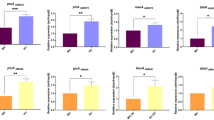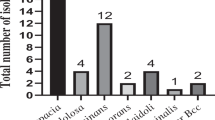Abstract
Surfactants might impact treatment of lower respiratory tract infections. Moreover, other body fluids, such as urine or serum, could impact antibacterial activity as well. Therefore, the impact of surfactants, urine, and serum on the antibacterial activity of the novel β-lactam/β-lactamase inhibitor combination of cefepime-enmetazobactam (FPE) was determined. Ten clinical isolates of Klebsiella pneumoniae, and the quality control strains K. pneumoniae ATCC 700603 and Escherichia coli NCTC 13353, were tested. Minimal Inhibitory Concentration (MIC) determinations (all strains) and Time Kill Curves (TKC) (one clinical isolate) were determined for FPE and piperacillin-tazobactam (TZP) with and without surfactant formulations Survanta® (SUR; 1%v/v) and Curosurf® (CUR; 1 mg ml−1). Determination of daptomycin MIC against Staphylococcus aureus ATCC 29213 in the presence and absence of surfactants was used as a positive control. Additionally, the impact of growth media supplemented with pooled human urine or serum were also evaluated by MIC testing. Expectedly, media supplemented with SUR increased the daptomycin MIC against S. aureus ATCC 29213. In contrast, the surfactants had no impact on the antibacterial activity of FPE against the tested Enterobacterales isolates. TKC experiments also revealed no impact of CUR on the antibacterial activity of FPE. These results demonstrate that the antibacterial activity of FPE is unaffected in the presence of lung surfactant. Moreover, FPE was not impacted by media supplemented with urine or serum.
This is a preview of subscription content, access via your institution
Access options
Subscribe to this journal
Receive 12 print issues and online access
$259.00 per year
only $21.58 per issue
Buy this article
- Purchase on Springer Link
- Instant access to full article PDF
Prices may be subject to local taxes which are calculated during checkout

Similar content being viewed by others
References
Silverman JA, Mortin LI, VanPraagh ADG, Li T, Alder J. Inhibition of daptomycin by pulmonary surfactant: In vitro modeling and clinical impact. J Infect Dis. 2005;191:2149–52.
Gotfried MH, et al. Intrapulmonary distribution of intravenous telavancin in healthy subjects and effect of pulmonary surfactant on in vitro activities of telavancin and other antibiotics. Antimicrob Agents Chemother. 2008;52:92–97.
Van’t Veen A, Mouton JW, Gommers D, Kluytmans JANAJW, Dekkers P. Influence of pulmonary surfactant on in vitro bactericidal activities of amoxicillin, ceftazidime, and tobramycin. Antimicrob Agents Chemother. 1995;39:329–33.
Dugourd D, et al. Antimicrobial properties of MX-2401, an expanded-spectrum lipopeptide active in the presence of lung surfactant. Antimicrob Agents Chemother. 2011;55:3720–8.
Schwameis R, et al. Effect of pulmonary surfactant on antimicrobial activity in vitro. Antimicrob Agents Chemother. 2013;57:5151–4.
Nussbaumer-Pröll A, Zeitlinger M. Use of supplemented or human material to simulate pd behavior of antibiotics at the target site in vitro. Pharmaceutics. 2020;12:1–18.
Zhanel GG, et al. Ceftolozane/tazobactam: A novel cephalosporin/β-lactamase inhibitor combination with activity against multidrug-resistant gram-negative bacilli. Drugs. 2014;74:31–51.
Ian M, Sophie M, Stephen H, Stuart S, Philipp K. In vitro activity of cefepime-enmetazobactam against gram-negative isolates collected from U.S. and European hospitals during 2014–2015. Antimicrob Agents Chemother. 2019;63:1–9.
Papp-wallace KM, et al. Beyond piperacillin-tazobactam: cefepime and AAI101 as a potent β-lactam-β-lactamase inhibitor combination. Antimicrob Agents Chemother. 2019;63:1–17.
Clinical and Laboratory Standards Institute (CLSI). Performance standards for antimicrobial susceptibility testing. (2019). Available at: https://clsi.org/standards/products/iso-documents/iso-20776-12006/.
Das S, et al. Intrapulmonary pharmacokinetics of cefepime and enmetazobactam in healthy volunteers: Towards new treatments for nosocomial pneumonia. Antimicrob Agents Chemother. 2021;65:e01468-20.
Johnson, A et al. Pharmacodynamics of cefepime combined with the novel extended-spectrum-beta-lactamase (ESBL) inhibitor enmetazobactam for murine pneumonia caused by ESBL-Producing Klebsiella pneumoniae. 2020;64:1–14.
Nussbaumer-Pröll AK, et al. Low pH reduces the activity of ceftolozane / tazobactam in human urine, but confirms current breakpoints for urinary tract infections. J Antimicrob Chemother. 2019;dkz488:1–7.
Castanheira M, Duncan LR, Rhomberg PR, Sader HS. Enhanced activity of cefepime–tazobactam (WCK 4282) against KPC-producing Enterobacteriaceae when tested in media supplemented with human serum or sodium chloride. Diagn Microbiol Infect Dis. 2017;89:305–9.
Acknowledgements
We would like to thank Juan Quevedo, representative of Advanz Pharma, for administrative support. Moreover, we would like to thank (Allecra Therapeutics), especially A. Belley and P. Knechtle for funding the in vitro experiments.
Author information
Authors and Affiliations
Corresponding author
Ethics declarations
Conflict of interest
The authors declare no competing interests.
Additional information
Publisher’s note Springer Nature remains neutral with regard to jurisdictional claims in published maps and institutional affiliations.
Supplementary information
Rights and permissions
Springer Nature or its licensor (e.g. a society or other partner) holds exclusive rights to this article under a publishing agreement with the author(s) or other rightsholder(s); author self-archiving of the accepted manuscript version of this article is solely governed by the terms of such publishing agreement and applicable law.
About this article
Cite this article
Nussbaumer-Pröll, A., Eberl, S., Belley, A. et al. Impact of surfactants and other body fluids on in vitro activity of a novel β-lactamase inhibitor enmetazobactam in combination with cefepime against clinical isolates of Klebsiella pneumoniae. J Antibiot 76, 183–189 (2023). https://doi.org/10.1038/s41429-022-00592-w
Received:
Revised:
Accepted:
Published:
Issue Date:
DOI: https://doi.org/10.1038/s41429-022-00592-w
This article is cited by
-
Pulmonary surfactant impacts in vitro activity of selected antifungal drugs against Candida krusei and Candida albicans
European Journal of Clinical Microbiology & Infectious Diseases (2024)



